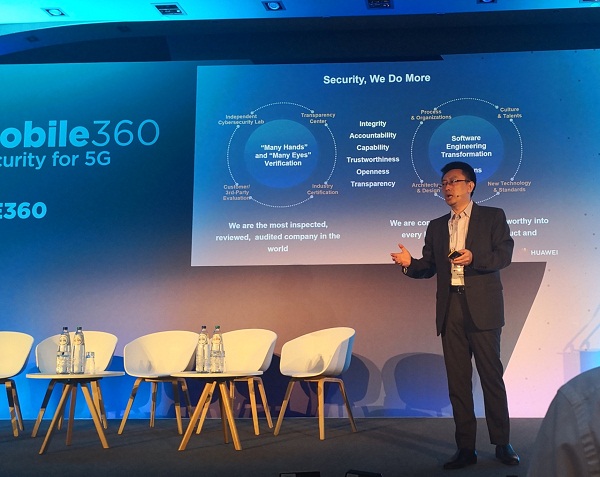The GSMA Mobile 360 Series was held recently in the Hague under the theme “Security for 5G”, bringing together representatives from global carriers, equipment vendors, governments, and industry regulators. This event intends to drive consensus – across Europe and the globe at large – on 5G cyber security assurance, testing, and certification schemes.
Sean Yang, Director of Huawei’s Global Cyber Security & Privacy Office, delivered a keynote speech at the event titled “Openness, Collaboration Development: Building a Secure Digital Society.” Yang discussed the fast-changing global 5G landscape, and shared what the industry has done in 5G security standards and 5G security testing in response to cyber security challenges.
Yang noted that Huawei actively responds to and supports the Network Equipment Security Assurance Scheme (NESAS) – a GSMA initiative aimed at driving the development of unified standards for cyber security testing and certification in Europe and the world. Unified security standards will help ensure that all network elements and services can reach the same levels of security.
“It’s understandable that 5G security is drawing a lot of attention,” Yang said, “We need to remember that cyber security is, in essence, a technical issue, and any technical issue should be addressed through technical means. Trust in cyber security should be based on facts; facts must be verifiable; and verification must be based on standards.”
Yang also emphasized Huawei’s readiness to work with industry partners to develop clearer standards and rules, and build confidence in the industry. “We always support and actively contribute to international standards, and comply with cyber security laws and regulations,” he said. “We are working with industry partners to build an open, transparent, and vibrant global ecosystem that thrives on collaboration and shared success.”
Yang expressed his belief that all technologies face security issues at the inception stage. Efforts must be devoted to addressing these issues as the technology continues to develop, he added, noting that all stakeholders need to adopt a proactive attitude. He called on all industry players to work together to build confidence and create a secure digital world for future generations.
“Security starts with our values and beliefs, including in integrity, capability, accountability, trustworthiness, openness, and transparency,” he said. “Huawei is actively working with all stakeholders on security technology, standardization, certification, verification, and the sharing of vulnerability and threat information.”
Yang also pointed out that Huawei has built six security verification centers around the world, including the recently opened Cyber Security Transparency Centre in Brussels, which Yang described as a platform for collaboration and communications among government agencies, technology experts, industry associations, and standards organizations.
“Through this platform, we can find a path toward a better balance between development and security in a digital era,” he said.
During the event, Huawei released a white paper entitled Partnering with the Industry for 5G Security Assurance. The white paper outlines how 5G builds on the security protocols of previous generations of communications technology (from 2G and 3G to 4G) and provides enhanced cyber security capabilities. This means 5G is far more secure than its predecessors.
In order to expand existing achievements in 5G security, Huawei has called on the entire industry to remain open, transparent, and collaborative, and continuously optimize laws, regulations, and verification and assurance mechanisms for 5G security. Huawei hopes these initiatives will make networks more resilient and improve security standards and technologies so that 5G security threats and challenges can be better addressed.

